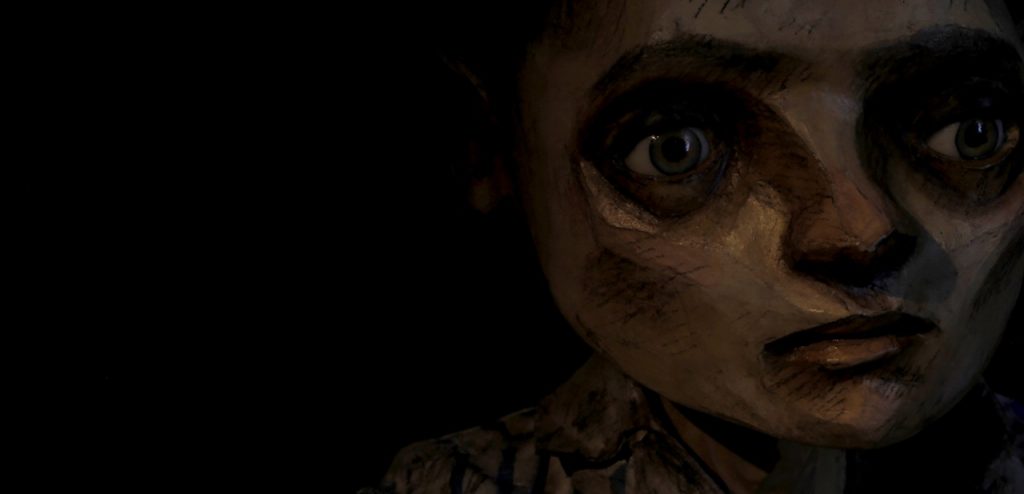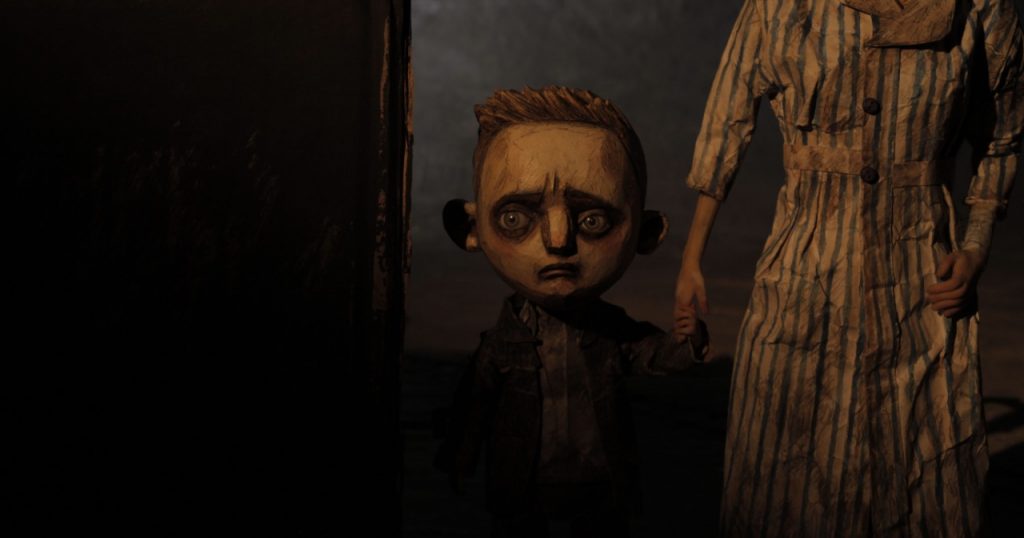Filmmaker 5 with Rita Basulto: HUMO

HUMO (Smoke), screened as part of this year’s 19th Annual Oscar-Qualifying HollyShorts Film Festival as part of the Adult Animation block. Directed by Academy Member and stop motion animator Rita Basulto, short film HUMO follows the story of Daniel, a young boy who travels by train towards a dark destination known as the smokehouse. Set in the Holocaust, HUMO tells Daniel’s story, a child sharing the inexplicable experience he and his family endure, telling the tale as only an innocent child would. Filmmaker and animation master Rita Basulto creates a heartbreaking story told with incredible artistic detail.
Our Classic Couple Academy interview with HUMO filmmaker Rita Basulto follows.
Filmmaker 5.1: HUMO is told in the voice of a child. Why was it important to tell this story from a child’s point of view?

The film is an adaptation of the illustrated children’s book ¨HUMO¨ by Antón Fortes and Joanna Concejo, from the Spanish publishing house OQO. The story is told from the point of view of a young anonymous protagonist who is defenseless in the face of the horrors of war. To me, this helps showcase the brutal contrast between the dehumanization of this time period and the innocence of a child as it experiences a painful awakening. Through this juxtaposition, we hope the story is able to highlight one of the deepest and most forceful voices in human consciousness, leaving a heartbreaking endless echo in our souls.
Filmmaker 5.2: As director and art director on HUMO, how did you arrive at the visual design for the film?
I did an endless amount of research and was very moved by the photographic records of this time period. I was faced with a story that required many locations and countless extras, so I had to sit with it for a bit before arriving at the design you see on screen. I decided to go down the path of resource austerity and adopted the mantra of ‘less is more’. I wanted to use a few elements that were loaded with symbolism. For example, using lines as a symbol of the loss of freedom. There are lines everywhere in the short: the bars on their uniforms, the barbed wire, the columns and beams of the barracks and bunk beds, even the expression lines of the characters and the cardboard extras were also thought out in this manner. Our story unfolds in an imperfect world where asymmetry and disproportion reign, from the characters’ bodies and faces, down to the smallest details in the set design.
Filmmaker 5.3: Stop motion animation requires seamless collaboration. How did you achieve this with your creative crew of animators, marionette makers, camera operators, visual effects artists and more?
Stop motion requires a lot of care and attention to detail in all its stages from development to pre-production and production. Due to my training as a plastic artist, I was very hands-on during all this process, from designing and making the puppets, to serving as the cinematographer, to set design and color correction. I was very fortunate, however, to have a group of professionals with great experience in this space with whom I’ve worked in the past as part of my team.

Filmmaker 5.4: What does short film offer to your craft as an animator? How is short film important to you as a storyteller on film?
Unlike the commercial feature film that must respond to the box office in order to generate economic profits and thus contribute to the industry, shorts offer great freedom to explore more personal narratives and aesthetics. They allow filmmakers to create art without any commitment other than that of the author with their own being. This freedom always leads us to tell more legitimate and honest stories.
Filmmaker 5.5: What is your biggest hope for HUMO as audiences take it in at the HollyShorts film festival?
I hope it will be a good cinematographic experience for them as I am aware that art and cinema are not always pleasant. This film is an example of how we can use the medium to remind audiences of mistakes humanity has made in the past, and I hope that they come with us on this journey of empathy towards our main character and his mother and to keep some of their journey in their memory as they leave the theater.

